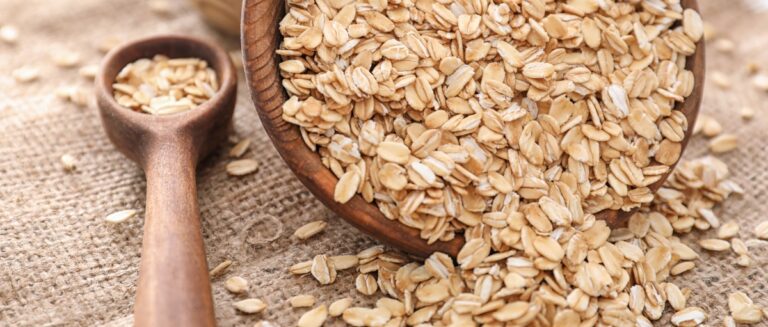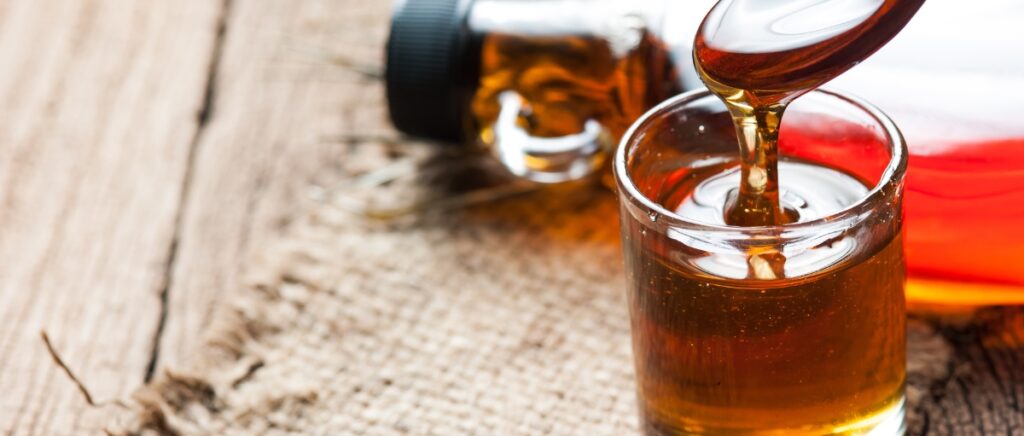You’re rummaging through your pantry and come across a half-used bottle of pure maple syrup from who knows when. A thought crosses your mind: does syrup expire? You’re not alone in wondering. Many people question whether this all-natural sweetener has an indefinite shelf life or if it can spoil over time.
The short answer is yes, maple syrup can go bad, but it has a longer shelf life than you might think. Thanks to its high sugar content, a glass bottle of pure maple syrup can last over 50 years if stored properly, while plastic bottles can last from 1 to 2 years.
However, even the highest quality maple syrup based on the grading system, can grow mold if left at room temperature for too long or if contaminated by moisture or bacteria. It’s important to know how to store your syrup correctly and recognize signs that it may have gone off.
So before you toss that old bottle, read on to learn everything you need to know about keeping your maple syrup in optimal condition. Your pancakes will thank you!
Does Maple Syrup Go Bad?
Pure maple syrup has an exceptionally long shelf life, largely thanks to its high sugar content. In fact, maple syrup is about 66% sugar! This creates an environment that’s inhospitable to bacteria and mold growth.
When stored properly in an airtight container, an unopened bottle of 100% pure maple syrup can be kept indefinitely. The key is to keep it stored in a cool, dark place like a pantry, away from direct sunlight or temperature fluctuations. Glass containers are best for long-term storage, as plastic can degrade over time.
Once you open the bottle, maple syrup is still quite shelf-stable. An opened container of pure maple syrup can last up to a year in the fridge, but it may start to absorb other flavors after about six months. However, it’s important to use a clean utensil each time you pour out syrup to avoid introducing any contaminants that could lead to mold growth.
While uncommon, maple syrup mold can develop if left at room temperature for an extended period or if moisture or bacteria get into the bottle. Mold typically grows on the surface of the syrup and may appear as white, yellow, or greenish-gray fuzz. Moldy maple syrup is still generally safe to consume (more on that later), but it can affect the taste and texture.
It’s worth noting that imitation maple syrups, which are usually made with corn syrup and artificial flavors, have different shelf lives than pure maple syrup. These products often contain preservatives that prevent mold growth, but they may have a “best by” date and degrade in quality over time. Always check the label for storage instructions and expiration dates on imitation syrups.
How to Store Maple Syrup for Optimal Freshness
Proper storage is key to keeping your maple syrup fresh and flavorful for as long as possible. Here are some tips for storing both unopened and opened bottles of maple syrup:
Unopened Bottles
- Store unopened bottles of maple syrup in a cool, dark place like a pantry or cupboard. Avoid storing syrup in direct sunlight or near heat sources, as this can cause the syrup to darken and lose flavor over time.
- Keep the bottle away from temperature fluctuations, such as above a stove or in an uninsulated garage. Wide temperature swings can also degrade the syrup’s quality.
- For long-term storage, glass bottles are preferable to plastic. Plastic containers can leach chemicals into the syrup over time, affecting its taste and purity.
Opened Bottles
- After opening a bottle of maple syrup, refrigerate it immediately. The cold temperature will slow down the growth of any bacteria or mold spores that may have been introduced.
- Always use a clean utensil when pouring out syrup to avoid contaminating the remaining syrup in the bottle. Don’t use the same knife or spoon that’s touched other foods like butter or pancake batter.
- If you don’t plan on using your maple syrup frequently, consider transferring it to a smaller container before refrigerating. The less air in the bottle, the lower the risk of mold growth.
Long-Term Storage
- For long-term storage, you can freeze maple syrup in airtight containers. Pure maple syrup won’t freeze solid due to its high sugar content, so you can still pour it out as needed.
- Frozen maple syrup will maintain its quality indefinitely, though it’s still best to use it within a year for optimal flavor.
Whether storing your maple syrup in the pantry, refrigerator, or freezer, always make sure the bottle or container is tightly sealed after each use. This will help prevent any moisture or contaminants from getting in and extend the shelf life of your syrup.
How to Tell if Maple Syrup Has Gone Bad
While maple syrup has a long shelf life, it can still spoil under certain conditions. Here are some signs that your maple syrup may have gone bad:
- Mold growth: If you notice any fuzzy, white, green, or yellow growth on the surface of your maple syrup, it has likely developed mold. Mold can occur when syrup is left at room temperature for too long or if moisture gets into the container.
- Off smells: Pure maple syrup should have a sweet, caramel-like aroma. If your syrup smells sour, alcoholic, or has a strong, unpleasant odor, it may have started to ferment or spoil.
- Crystallization: While not a sign of spoilage, crystallization can affect the texture of your maple syrup. If you notice large, gritty crystals in your syrup, it may have been exposed to temperature fluctuations or stored for too long. This crystallized maple syrup is termed maple sugar.
If you detect any signs of mold growth or off smells, it’s best to discard the syrup to avoid potential health risks. Crystallized syrup, on the other hand, can often be revived (see the section below for tips).
Is It Safe to Eat Moldy Maple Syrup?
If you discover mold growing on your maple syrup, you may be tempted to simply skim off the top layer and continue using the rest. In fact, this was a common practice for many years, with some folks even heating the syrup to kill off any remaining spores.
However, current food safety guidelines advise against consuming moldy maple syrup, even if you remove the visible mold. Some molds can produce mycotoxins that spread throughout the syrup and can cause allergic reactions or respiratory issues in some people. Boiling the syrup may kill off surface mold but won’t destroy these toxins.
The safest course of action is to discard any maple syrup that shows signs of mold, no matter how small. It’s not worth risking your health to save a few dollars on syrup.
How to Revive Crystallized Maple Syrup
If your maple syrup has developed large, gritty crystals, don’t worry—it’s still safe to eat and can often be restored to its original smooth texture. Crystallization occurs when the sugar molecules in the syrup clump together, usually due to fluctuating temperatures.
To dissolve the crystals and revive your syrup, follow these steps:
- Place the syrup container in a pot of hot water or microwave it in short 10-second bursts until the crystals dissolve. Avoid boiling the syrup, as this can cause it to darken and lose flavor.
- If the crystals are particularly stubborn, you can pour the syrup into a saucepan and warm it over low heat, stirring gently until the crystals dissolve. Be careful not to let the syrup boil.
- Once the crystals have dissolved, let the syrup cool to room temperature before transferring it back to a clean, airtight container for storage.
Keep in mind that repeatedly reheating maple syrup can cause it to lose its delicate flavor and aroma over time, so try to avoid letting your syrup crystallize in the first place by storing it properly.
Sweet Tips for Enjoying Your Maple Syrup
Maple syrup is a delicious, all-natural sweetener that can elevate pancakes, waffles, oatmeal, and countless other dishes. By following these simple storage and handling tips, you can ensure that your maple syrup stays fresh and flavorful for as long as possible.
Proper storage and handling are key to ensuring your maple syrup stays fresh and flavorful. Keep unopened bottles in a cool, dark place, and refrigerate them once opened. Always use a clean utensil, and for long-term storage, freezing syrup is the best option. Regularly check for spoilage, and if crystallization occurs, gently reheat the syrup to restore its texture. Following these simple tips will help you enjoy your maple syrup for as long as possible.
With proper care, your maple syrup can last for months or even years, allowing you to savor its rich, complex flavor in all your favorite recipes. So go ahead and stock up on this liquid gold—your taste buds will thank you!
Sources
Anderson’s Maple Syrup. (n.d.) Maple syrup storage guidelines. Retrieved from https://andersonsmaplesyrup.com/wp-content/uploads/2018/04/MapleSyrupStorageRetail.pdf
Ohio State University. (n.d.) Maple syrup production for the beginner. Retrieved from https://ohioline.osu.edu/factsheet/anr-101
Epicurious. (n.d.) Does maple syrup need to be refrigerated? Retrieved from https://www.epicurious.com/expert-advice/does-maple-syrup-need-to-be-refrigerated
World Health Organization. (n.d.) Mycotoxins. Retrieved from https://www.who.int/news-room/fact-sheets/detail/mycotoxins
MHCC Pressbooks. (n.d.) Mixtures, physical changes, and candy making. Retrieved from https://mhcc.pressbooks.pub/chemfoodcooking/chapter/mixtures-physical-changes-and-candy-making/











